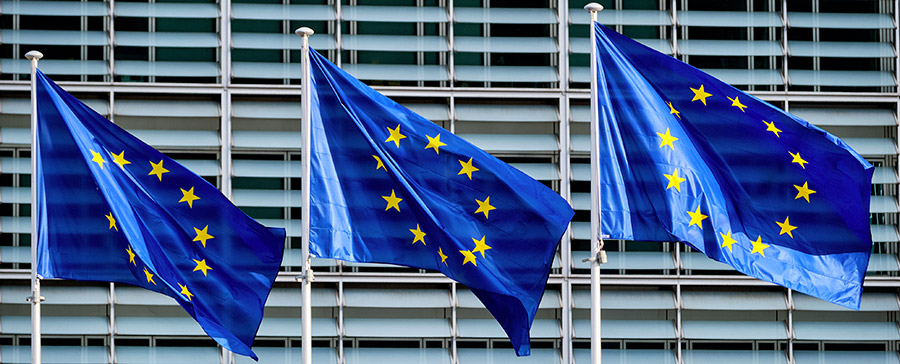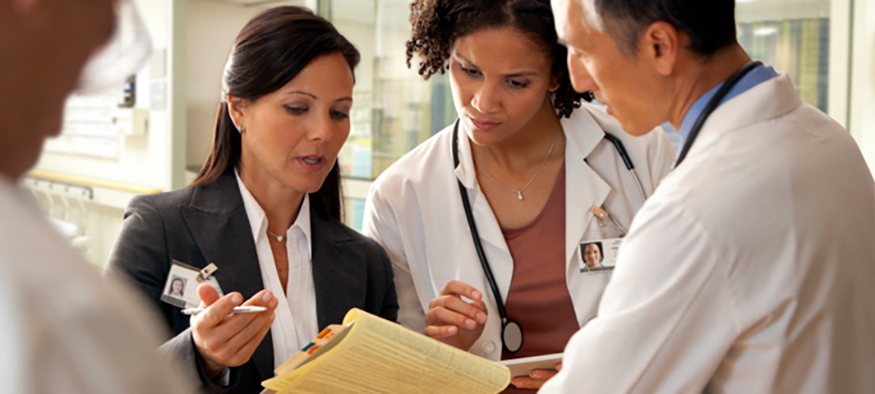For 2025 our aims are:
Team-NB is actively pursuing transparency for notified bodies in Europe.

- Encouraging the continuous improvement and development of products, allowing patients increased access to safe yet innovative devices.
- Active involvement and support on the implementation of the new Medical Device Regulation and the In-Vitor-Diagnostic Regulation, e.g. by supporting the creation and pragmatic update of guidances
- Support to notified bodies, through our detailed and state of the art guidance documents, to ensure a harmonious standard is achieved by our members throughout Europe.
- The promotion of innovation, but innovation that is backed by solid safety and effectiveness data. The certification of manufacturers’ products is essential to continue the confidence in Medical Devices and In-Vitro Diagnostic products.
- Develop effective communications to ensure our members receive the latest information on all regulatory developments, including guidance, regulations and standards.
Advantages of being a Team-NB member:

- Part of a recognized association
- One voice to comments new guidance’s and to influence the regulation process
- Attendance to the meetings organised by the Commission
- Attendance to a lot of meetings organised by the Commission and other stakeholders
- Availability of reports of numerous Commission and working groups meetings
- Web site private part
- Taiwan request that the notified bodies to have signed the Code of Conduct to participate in the TCPII mutual agreement with Europe scheme. Team-NB members only are welcome in this scheme. Thank to our contact with the Commission, members are aware of modifications earlier than other notified bodies.
Team-NB Presentation
TEAM -NB, The European Association of Medical devices Notified Bodies, is being formed on 2001.
Today the association has 44 members. Those 44 members represent 20 different countries.
This association promotes high standards and works to harmonise practices among the Notified Bodies.
In the former years, the association reached the following:
- web site www.team-nb.org with a public and private part :
- public part contain among others:
- Members list
- Contacts
- Documents (GHTF, IMDRF, EU Recommendations MDCG, Implementing acts, Directives, Recommendations)
- private part
- reports and detailed and easy to use minutes
- public part contain among others:
- accreditation by the European Commission ( MDCG meetings) and set up of a dialog platform (bilateral meetings)
- accreditation by the EMA and establishment of dialogues
- accreditation at the HTA stakeholders’ network
- establishment of contacts with Industry representatives
- establishment of mechanism for dialog with NBO
- participation to meetings with Commission, European Parliamentarian, CAMD and National Competent authorities
- part of the process to establish new regulations and guidance’s
- organisation of trainings for Notified Bodies
- organisation of harmonisation sessions for Notified Bodies experts
- Designing of Position Papers with the aim to harmonise the best practices among Notified Bodies
- contribution to the setting up of the new EUDAMED data base
- Contacts with the German alliance of NBs
- Power Point presentation of the sector
- On-going sector survey allowing trends analyses
- organisation of trainings for Manufacturers
As decided by the General Assembly, the 2025 fees will be as in the below table :
To be able to identify the 2025 membership fee, you need to know the numbers of issued QMS certificates following both Directives and Regulations.
In details, the QMS certificates are the ones issued against
-
- AIMDD – Annex 2 & 5
- MDD Annex 2 & 5 & 6
- IVD Annex IV
- MDR Annex IX – 1 / IX – 3 / Annex XI part A
- IVDR Annex IX – 1 / IX – 2 / Annex X part A
Membership fees for 2025
| Category of NB | Fee |
| Candidate / Group Member | 2750 € |
| QMS Certificates issued <200 | 5500 € |
| QMS Certificates issued ≥ 201 & ≤ 500 | 8250 € |
| QMS Certificates issued ≥ 501 & ≤ 1000 | 11000 € |
| QMS Certificates issued ≥ 1001 | 13750 € |
General information:
Understanding the Foundations of Medical Device Regulation
Compliance in the field of medical devices is crucial for ensuring public health, patient safety and maintaining public trust. The Medical Device Regulation (MDR) (EU 2017/745) and In Vitro Diagnostic Regulation (IVDR) (EU 2017/746) establish stringent guidelines for manufacturers aiming to place their products in the European market. These regulations align with various European directives and are essential for upholding standards across medical technologies, including implantable medical devices, in vitro diagnostic devices (IVD), and active medical devices.
Role of Notified Bodies in the Medical Device Sector and CE Certification
In the medical device sector, notified bodies play a crucial role in assessing the conformity of medical devices before they are placed on the market in the European Union.
Notified bodies are independent organizations designated by EU member states to assess the safety and performance of medical devices (conformity assessment procedures) with the requirements of European regulations, notably the Medical Device Regulation (EU) 2017/745 (MDR) and the In Vitro Diagnostic Regulation (EU) 2017/746 (IVDR). They receive MD application and MD submission from the manufacturers.
They conduct audits of manufacturers’ quality management systems and review the technical documentation of devices to ensure they meet safety and performance requirements as outlined in in General Safety and Performance Requirements. The Notified Bodies evaluate the compliance with applicable standards, such as EN ISO 13485 for quality management systems, EN ISO 14971 for risk management, and EN 62366-1 for usability engineering, …
Notified bodies also evaluate clinical data and clinical trials to ensure that medical devices are safe and effective for their intended use. They review biocompatibility tests and performance studies as well.
After evaluating the devices and determining that they comply with regulatory requirements, notified bodies issue CE certificates, allowing manufacturers to market their medical devices in the European Union.
Notified bodies perform periodic inspections and surveillance audits to ensure that marketed medical devices continue to meet state of the art throughout their lifecycle.
Ensuring Compliance through Quality Management and Training
Compliance trainings are a vital aspect of aligning with regulatory requirements. These trainings encompass risk management, technical file preparation, clinical evaluation, and the development of a robust post-market surveillance plan (PMS). The effectiveness of such compliance efforts is bolstered by adherence to standards like EN ISO 15223-1 (symbols for labeling) and EN 1041 (information to be provided by the manufacturer).
Technical Documentation and Clinical Requirements
Comprehensive technical documentation is essential for regulatory audits and conformity assessments. The Medical Device Regulation (MDR) mandates a Clinical Evaluation Report (CER) and, for certain products, Clinical Investigations. The regulatory audits also cover critical aspects such as medical device vigilance, post-market clinical follow-up (PMCF), and traceability, particularly for devices emitting ionizing radiation or electromedical devices (or Electronic medical devices) .
Regulatory Audits and Incident Reporting
Regulatory compliance extends to rigorous market monitoring and incident reporting. Standards like EN ISO 20417 (information for the user) and EN 14155 (clinical investigation of medical devices) guide manufacturers in maintaining a high level of safety. The Post-Market Surveillance & Vigilance (PMSV) processes ensure continued product safety and efficacy, crucial during transitional periods for legacy devices.
Medical Device Coordination Group (MDCG) of the European Commission
The Medical Device Coordination Group (MDCG) is a key advisory body established by the European Commission under the Medical Device Regulation (MDR) (EU) 2017/745 and In Vitro Diagnostic Regulation (IVDR) (EU) 2017/746. Its main role is to provide advice and support to the European Commission and EU member states on the implementation and enforcement of these regulations.
It plays a crucial role in the effective implementation of the MDR and IVDR by providing expert guidance, promoting harmonized practices, and supporting regulatory authorities (Competent Authorities) and notified bodies. Its efforts help ensure that medical devices marketed in the EU are safe, effective, and compliant with regulatory standards.
Notified Body Coordination Group – NBCG-Med
The Notified Body Coordination Group (NBCG-Med plays a key role in strengthening the reliability, transparency, and consistency of the medical device certification system in Europe. The group
is established in accordance with Article 49 of Regulation (EU) 2017/745 on medical devices and Article 45 of Regulation (EU) 2017/746 on in vitro diagnostic medical devices. Its main role is to ensure a harmonized and consistent approach in assessing the compliance of medical devices under Regulation (EU) 2017/745 (MDR) and Regulation (EU) 2017/746 (IVDR).
The Impact of EUDAMED and Unique Device Identification (UDI)
EUDAMED, the European database for medical devices, supports transparency and traceability. UDI, aligned with IMDRF guidelines, provides an essential framework for tracking devices throughout their lifecycle. These mechanisms are supported by the vigilance system for monitoring incidents and implementing corrective and preventive actions (CAPA).
Role of the European Medicines Agency (EMA) in supervision of Expert Panels
By overseeing expert panels, the EMA plays a vital role in the scientific evaluation and regulation of some high risk medical devices in Europe. It ensures that medical devices placed on the market are safe, effective, and based on solid scientific evidence, while supporting regulatory authorities in their decision-making processes.
Authorised Representatives (AR)
In the medical device sector, it is a legal entity or individual established within the European Union (EU) who acts on behalf of a non-EU manufacturer to ensure compliance with the applicable EU legislation. The role of the AR is essential for manufacturers based outside the EU who want to place their medical devices on the EU market. The are bridging the gap between non-EU manufacturers and the European market, ensuring that medical devices meet stringent regulatory requirements and maintaining a high level of safety and performance.
Person Responsible for Regulatory Compliance (PRRC)
A Person Responsible for Regulatory Compliance is a designated individual within a medical device company who ensures that the company’s products comply with relevant regulatory requirements. This role was established under the European Union Medical Device Regulation (MDR) (EU) 2017/745 and In Vitro Diagnostic Regulation (IVDR) (EU) 2017/746 to enhance the safety and performance of medical devices. The PRRC is ensuring that medical device companies comply with stringent EU regulations, thereby ensuring the safety and efficacy of their products. By managing regulatory compliance activities, the PRRC helps to protect public health and maintain the company’s reputation and market access.
Role of Team-NB
The European Association of Medical Device Notified Bodies, commonly known as TEAM-NB, plays a significant role in the medical device sector as part of the Public Health.
TEAM-NB plays a crucial role in supporting its member notified bodies, advocating for their interests, and promoting high standards of quality and consistency in the conformity assessment of medical devices. By doing so, the association contributes to the safety and effectiveness of medical devices available in the European market for the well-being of European Citizens.
Advocacy and Representation
TEAM-NB represents the interests of its member notified bodies in discussions with European and international regulatory authorities, such as the European Commission, the European Medicines Agency (EMA), and various standardization organizations (CEN, CENELEC). By doing so, it ensures that the perspectives and concerns of notified bodies are considered in the development and implementation of regulatory frameworks.
Standardization and Harmonization
The association works towards the harmonization of regulatory practices among its members. TEAM-NB promotes the consistent application of European regulations and standards across notified bodies, ensuring a uniform approach to the conformity assessment of medical devices. This harmonization helps to maintain high standards of safety and performance for medical devices in the European market.
Information Sharing and Best Practices
TEAM-NB facilitates the exchange of information and best practices among its members. By organizing meetings, workshops, and conferences, the association provides a platform for notified bodies to share knowledge and experiences, addressing common challenges and emerging issues in the medical device sector.
Training and Education
The association provides training and educational resources to its members, helping them stay updated on the latest regulatory requirements, technological advancements, and industry trends. This training ensures that notified bodies maintain the expertise necessary to effectively assess the conformity of medical devices.
Quality and Competence
TEAM-NB promotes high standards of quality and competence among its member notified bodies. It develops and implements guidelines, codes of conduct, and quality management systems to ensure that members operate with integrity, transparency, and professionalism.
Advocacy for Improvements
TEAM-NB advocates for continuous improvements in the regulatory framework for medical devices. By engaging with stakeholders and providing feedback on regulatory proposals, the association works to enhance the effectiveness and efficiency of the conformity assessment process, ultimately benefiting manufacturers, healthcare providers, and patients.
Collaboration with Stakeholders
The association collaborates with various stakeholders in the medical device sector, including industry associations, regulatory authorities, and healthcare organizations. This collaboration fosters a comprehensive understanding of the regulatory environment and promotes the development of policies that support innovation while ensuring patient safety.






